Family bow: everything you need to know about it
Many do not like to plant onion, because of that, the output is not an appetizing hard and fragrant bulb, but a soft and rotten head. Therefore, it is easier for gardeners to buy fresh produce than to expect, try and grow, and end up with an inedible product. But if you know how to plant correctly and in what conditions to keep planting, you can get an excellent harvest of family onions.
Content:
- Characteristics and benefits of the vegetable
- Review of the best varieties
- Preparing the soil and planting material for planting
- Landing time and scheme
- How to properly care for family onions?
- Diseases and pests, their signs and control of them
- Harvesting and storage methods
- Usage and properties
Characteristics and benefits of the vegetable
Family onions have long been cultivated mainly in villages and towns. Its names vary from simple "Kvochka", "Family", "Nest" to the original "Shallot", "Magpie", "Kushchevka".
The family bow is one of the subspecies onion.
But it has its own distinctive features and advantages. In one mother's head, planted in the ground, a different number of bulbs are formed. Some varieties are capable of dividing only up to 10 heads, then each bulb turns out to be quite large. In others, up to 20 "tenants" are placed in the nest, but in this case the heads will be correspondingly smaller, on average from 15 to 65 grams.
Each head differs not only in volume, but also in appearance. They may be:
- Oblong
- Elongated
- Rounded
- Jug-shaped
- Ovoid
- Cuboid
The color of the upper husk ranges from golden to bronze, from reddish to purple. When cut, the bulb may have a white structure or a pinkish tint. The green growth of torch has a great advantage over all other varieties - it branches well and remains fresh, green and soft throughout the growth period. Each nib is individually wax coated. In addition, feathers are much more delicate and superior in taste to other types. The taste of green leaves does not leave a sharp aftertaste and specific aroma after consumption from the mouth.
The greens of family onions are quite lush, they stretch out to 30-45 cm. It can be cut off completely or pulled out of the nest together with the head. The plant will not suffer from this, on the contrary, the remaining tubers will receive more nutrients for development. Harvesting for greens can already be done after 14-21 days from the moment of planting. If you plant a plant to get full-fledged tubers for food, then their ripening period is much shorter than that of an ordinary onion. So the latter ripens at least 90 days from the moment of planting, while the family is able to come up after 40-80 days.
Review of the best varieties
A large number of different varieties have been bred for planting onions. But farmers are of the opinion that no matter how original and non-standard type of onion is, it is best to plant local varieties.
The following varieties are distinguished, in which it is possible to obtain sufficiently large bulbs in the harvest:
- Knyazhich - an onion consists of 7-10 heads, each reaching a maximum of 75 grams. Outer color is brownish pink. The inner flesh has a pinkish tint, causing a pleasant aftertaste. Under favorable storage conditions, it is capable of retaining its original appearance and taste for a long period.
- White Queen - Up to 10 splinters grow in the head, each of which pulls out by 70 grams. The upper scales are of a snowy creamy tone, the pulp also has a white tone, and the aftertaste is a combination of the original taste, both sweet and spicy.
- Velikoustyugsky - grows in fertile soil in the amount of one head and reaches 6-10 torches. But they are quite large, each weighing 80 grams. It has a vigorous, pungent taste, and is covered with a brown-red shell on the outside.
- Water lily - in the nest of each head there are up to 5 onions, each of which resembles a jug. On average, their weight individually is at least 70 grams. The upper part is yellow-brown in color, the inside is white, and when eaten gives off pungency.
- Prometheus - gives great yields. Each head weighs an average of 80 grams. In terms of taste, it wins among all the others - soft, pleasant aftertaste. The color of the onion is yellow with a brown tint, of the correct even rounded shape.
- Grant is rich in fine, graceful feathers. It drives out a large amount of greens; when weighed, up to 200 grams of one tuber is obtained fresh feathers. The heads are yellow, round and flat in size. The family has from 4 to 11 children, whose average weight reaches 55-60 grams. for one splinter.
- Old Believers - his homeland is the Vologda region. The outer tone is copper with a pink tint. The aftertaste will give off significant pungency. Therefore, it is more used for making soups, as a frying or when stewing dishes.
- Andreyka - are transverse elliptical heads. The husk is dark brown and the inner flesh is pink. The taste is medium spicy. The weight of one torch reaches 26 grams.
- Albic - have a flat shape with a rounded diameter, are distinguished by a long storage period. Weight varies between 30-55 grams. the upper part is yellow. The pulp is saturated with pungency. Drives out a large amount of greens suitable for fresh consumption.
- Cascade - ripens early. The bulbs are small, reaching 35 grams. in volume. They are presented in the form of a large egg. The upper shell is pink, and the inner one is white with a slight pink tint. Differs in pungency when consumed.
- Earring - there are up to 7 splinters in the nest. All of them are presented in a rounded form, weighing up to 70 grams. maximum. The palatability is noted as very spicy.
Thus, the variety of family onions is quite large. If you want to grow a new species, you can resort to a huge selection of varieties that differ in appearance and taste.
Preparing the soil and planting material for planting
Cultivation of the "family" takes place both by seeds and with the help of bulbs. The latter method is simpler and more effective. Moreover, when planting torches, all maternal qualities are preserved in the grown crop.
Before starting planting work in the garden, it is recommended to prepare the bulbs for planting in advance:
- For this purpose, each onion is placed in an oven and the temperature is set to 35 C. The duration of heating should be at least 7 hours. Such a procedure reduces the possibility of attachment of various pathogenic bacteria.
- 24 hours before the expected work, the torch is soaked in warm water, diluted in it with a weak solution of Potassium Permanganate. Thanks to the event, the torches are disinfected, which leads to a decrease in the possibility of developing fungal diseases.
Planting is recommended to be done on fertile soils.You can choose a slightly heavier soil than for conventional varieties onions... From this, the torch will only be richer and better. The main quality of the prepared soil should be the drainage base. It is imperative to control the pH of the environment in the soil. It is recommended that it be neutral.
It is best to plant the Family onion on the ground in which it previously grew carrot, potato or legumes.
Soil preparation should be done in the fall. At this moment, humus should be added to the soil - about 5 kg. In addition, saturate the earth with superphosphate (25 g) and potassium salt (15 g). Such feeding should be carried out on 1 m2.
Landing time and scheme
The family onion is characterized by increased frost resistance. With a strong decrease in temperature, the ground part of the bulb will not develop, but the root system is actively increasing its mass. Therefore, it can be planted at any time of the year.
Rhizomes actively develop at a temperature of +2 .. + 25 C. At temperatures below -6 C, they simply stop their development until the onset of a favorable moment. Greens actively begin their growth at air degrees from +15 .. + 25 C.
But at the same time, green feathers are not afraid of frost, they feel calm both in the cold (-7 C) and in the heat (from +35 C).
Thanks to these parameters, the most favorable time for planting should be allocated. You should be in time at such a moment that root system increased the mass so that when warm weather sets in, it can feed the growing feathers. Otherwise, if the bulbs are rooted at temperatures above +15 C, then the ground part will immediately grow. The disadvantage of this time is the active growth of greenery, but at the same time the lack of development of rhizomes, which will not be able to properly nourish the plant.
Before planting, it is recommended to distribute all the bulbs by size, preheating and disinfecting them. The best planting option is a 10 cm distance between the splinters, while the length between the rows should be at least 20 cm.The splinters deepen into the ground during spring planting by 5 cm, and during winter planting by 8 cm deep into the soil.
How to properly care for family onions?
From the moment of planting, you should wait for the emergence of shoots 10 cm emerging from the ground. Only then start caring for the plant:
- There is no need for watering and other grooming due to the fact that the plant must develop a root system and independently deepen the roots into the ground in search of groundwater. Otherwise, the entire root system will be on the surface and will depend on the gardener's watering.
- After the emergence of seedlings, it is recommended the soil next to the seedlings mulch... For this purpose, cut dry grasses or weeds removed from the site are used. It is best to apply weeds. They are laid in a dense layer. After they dry, the soil will be covered with a dense porous layer. Thanks to such mulch, nutrients will enter the soil during the decomposition of the plant, and the top layer will not allow the nutrient moisture to quickly evaporate from the soil, grow new weeds, and the sun's rays will overheat the rhizomes of the onion.
- Further watering is carried out once every 7 days. For every 1 m2, at least 20 liters of water should be poured.
- No additional fertilization is required. But if it is noticed that the feathers have acquired a yellow tint, have begun to wither, then ammonium nitrate in a volume of 10 grams should be added, as well as potassium salt (15 grams), diluted in 1 bucket of water. If the cultivation is carried out on depleted soils, then fertilizing should be applied 2 times. The first time at the time of intensive build-up of the aerial part, and the second - at the time of the formation of the heads.
Diseases and pests, their signs and control
Identifying damage to a bow is easy enough. If the feather begins to turn yellow unusually, you need to look inside for the reason.A worm feeding on the internal sap of the plant can become a problem. It eats up the base of the feather, spoils the inner structure of the bulb. As a result, the root system begins to deteriorate and dry out. The feather begins to wither and die, and the bulb becomes soft and lethargic, with an unpleasant fetid aroma.
Onion fly is another dangerous pest for onions.
She lays eggs inside the head. They develop larvae feeding on the internal structure. The result is the death of the entire plant. To scare off an onion fly, you need to scatter cut branches from yarrow or wormwood on the site. They give off an odor that is unpleasant for the parasite.
In addition, an unpleasant pest is aphid... She attacks the plant with a large colony. For its extermination, it is recommended to try to influence the feathers with a solution of hot pepper, meadow wormwood or yarrow. If the desired result is not observed, you should use chemical insecticide to fight parasites (Verticillin). To eliminate any pests, until the first feathers appear, spray saline solution - 1 cup of table salt should be diluted into 1 bucket (10 liters).
If the plant has been affected by fungal diseases, it should be sprayed with a 1% solution bordeaux liquid... But in this case, there is a feather, not recommended. If harvesting is planned, then pollination should be stopped 10 days before harvest.
Harvesting and storage methods
Harvesting in most cases occurs in the second decade of July. A long stay of a torch in the ground can provoke an overload of nutrient moisture, then the torch will be loose, watery, unsuitable for storage. The event should be held at a time when half of the greenery has already wilted and turned yellow. It is recommended to completely stop watering before the planned harvest.
It should be dug out of the ground in the morning, at the moment when the fallen dew dries up. A sunny day is chosen for collection. The splinters are uprooted with a shovel. After that, the soil should be shaken off, leave the torch to dry out in the garden.
In the evening, the crop is harvested and moved to a dark room with a cool temperature and low humidity.
You need to lay out all the splinters in one layer. From that moment on, they are dried within 14 days. A well-dried onion is identified by the dried upper husk, which comes off well from the bottom. When the onion is ready, the tops are cut off. For long-term storage, only whole splinters are selected, without visible damage and soft parts. Storage can be carried out in wooden boxes in vegetable stores or rooms with low humidity and cool temperatures.
Usage and properties
The family bow has the same beneficial qualities as the rest of the representatives. onions... It contains a large amount of minerals and vitamins. In the autumn-spring period, it is the onion that saturates the body with the missing vitamins.
In most cases, it is used for cooking, frying when preparing first courses, and also as a dressing when stewing vegetables and meat. In addition, fresh onion feathers are great for use in salads. Onions are also used as a marinade. It can be frozen and, if necessary, taken out to serve.
The following useful properties of family onions are distinguished:
- Strengthens the body's defenses, increasing its resistance to viral diseases.
- With its nutrients, the torch acts on blood pressure, reducing its indicators, and also helps to strengthen the inner walls of blood capillaries.
- The antioxidant substances contained in onions have a beneficial effect on the elimination of toxic substances from the body.
- It can be used for eye diseases, as well as for diseases of the gastrointestinal tract.Effectively affects the digestive organs, quickly cleansing the intestines from stagnant feces and eliminating pathogenic microflora.
Therefore, the cultivation of family onions is due not only to the need for green feathers for consumption, but also to obtain nutrients for the treatment of certain types of diseases. For therapy, it is recommended to use either fresh ingredients or specifically prepared ones, in which all the elements useful for the internal organs are preserved.
Thus, family onions, in order to obtain a rich harvest, need to learn how to grow properly. It is important not only how to plant, but also in what kind of land. Adequate care should be taken for the growth of the bulbs and the ground part. Carry out control over the condition of the plant in order to avoid damage to the torches by parasites or diseases.
More information can be found in the video:



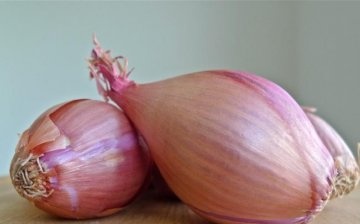
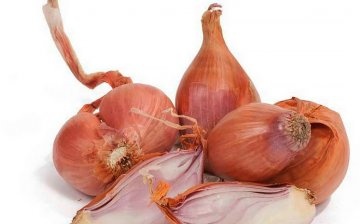
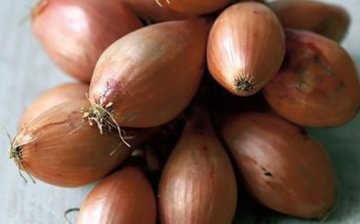
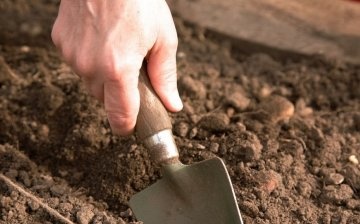
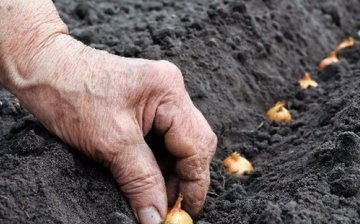
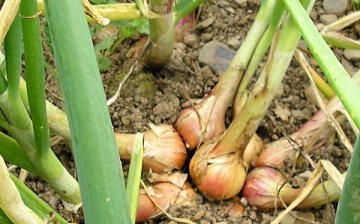
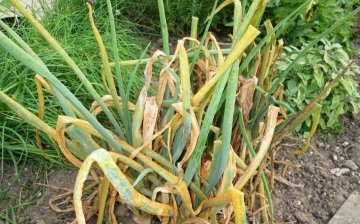











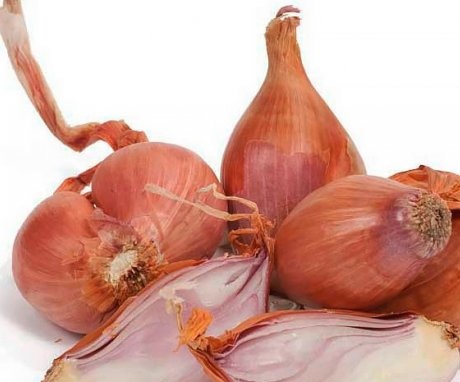
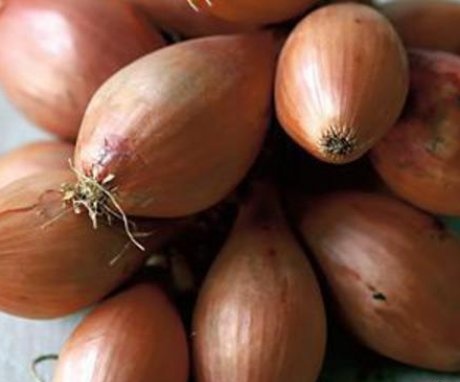
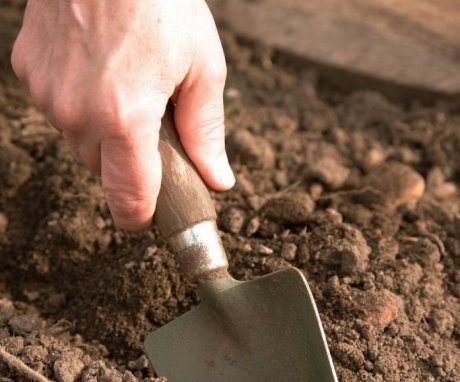
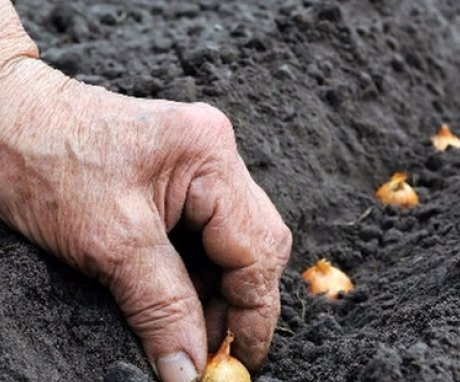
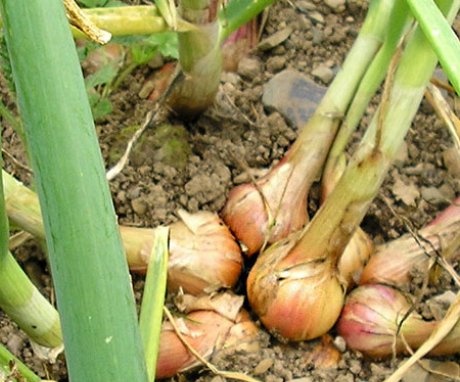

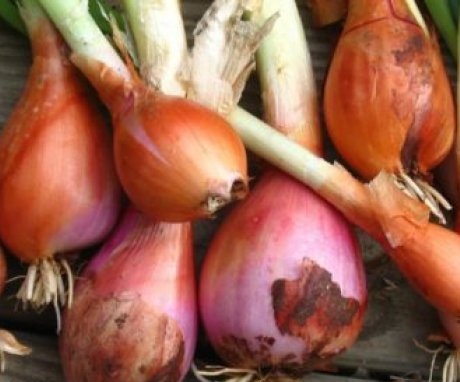
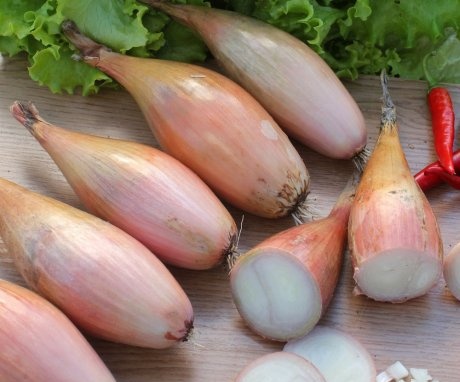
On our site, the onion of the Magpie, for some reason, does not grow large. We plant an onion seedling in the spring, fertilize, water, treat for diseases, but small onions. Perhaps the soil is acidic, or you need to change the onion variety.
For two or three years I did not know worries - the onions, which I myself grew, were enough. I bought the seeds on my way to the dacha. It turned out to be this very family one. The pen gave out great and in abundance. However, in the past year, the onions have deteriorated. Obviously, it was necessary to process something, but I started this business. It will be necessary to do it again and smartly next year, so as not to be left without a bow again.